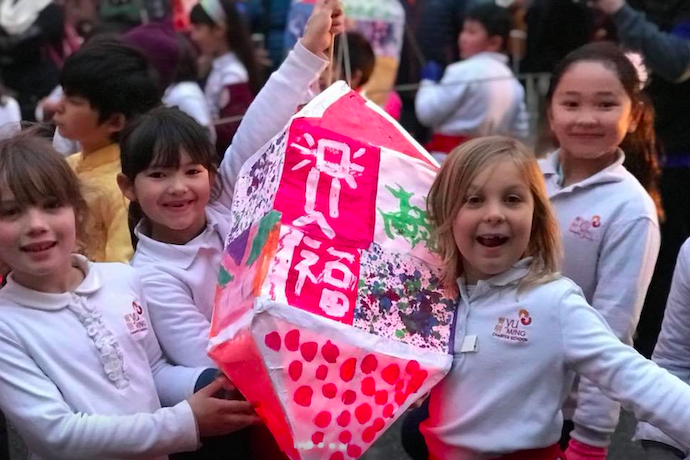Lunar New Year
For many countries throughout Asia, late January through early March is a time of celebration centered around the Lunar New Year. Although in western countries we sometimes refer to this period as Chinese New Year, it is recognized in many countries from Vietnam to Korea, making it one of the most celebrated holidays in the world.
Though Lunar New Year’s origins trace back to East Asia, today it is widely known across the globe. But perhaps less known in western countries is that on the fifteenth day of the new year a lantern celebration marks the end of two weeks of festivities. On this day children often carry small lanterns through the streets, lighting up the darkness of winter and welcoming the spring. In parts of Taiwan and China, thousands of people gather to send sky lanterns adorned with wishes for the new year up into the sky. And across Asia, high tech lanterns of all shapes and sizes light up cities, more often powered by batteries and LEDs than by fire.
Why Lanterns?
There are many stories that explain various possible origins of this 2000 year old tradition. One tells of a Chinese emperor who strongly advocated Buddhism and noticed that Buddhist monks would light lanterns in their temples on the fifteenth day of the lunar month. Another tells of the Jade emperor planning to storm a village on this day. To save themselves, the villagers hung red lanterns, set up bonfires, and lit firecrackers. This gave the appearance that the village was already burning and the emperor did not attack. Whatever the true origin of the celebration is, it has stood the test of time, evolving as society becomes increasingly high tech.
Lanterns and Code
There are many ways to partake in the lantern festival celebration. Many cities across the United States have their own lantern celebrations in which Americans can experience a bit of the festivities without traveling across the globe. And for those of us who love DIY projects and even want to add a bit of code to the celebration, we can make our own lanterns!
Lila Finch of the Laboratory for Playful Computation at the University of Colorado in Boulder followed her interest in science, coding, and art to develop a beautifully fun lantern project. The lanterns can be made by middle school students on up (and younger children as well with adult assistance), using techniques developed by the nebuta lantern makers in Amori Japan and adapted for both science, coding, and art projects across the world.
In a nutshell, these lanterns are made by galvanized steel wire (found at most hardware stores or on Amazon) held together by parcel post twine (or similar strings) dipped in glue, and covered with standard printer paper. Once assembled, they are painted with cold water dye (or other thin paint) and melted paraffin wax to allow for amazing colors and intensities of light to shine through.
And for the coding? Lila uses stings of Neopixel LEDs connected to a micro:bit to light her amazing lanterns. Previous issues of Beanz refer to many fun micro:bit projects, with instructions on how to program these kid-friendly microcontrollers. With a single click, the Neopixel library can be imported into the micro:bit programming environment (similar to Scratch and Blockly), allowing lantern designers and programmers alike to easily control the color of the LEDs. A few blocks of code make them blink, light up one-by-one, and fade in and out, among other cool effects. Interested in giving this project a try? Step-by-step instructions can be found here.
With the lantern festival coming up on February 19, 2019 Lila’s lanterns make for a timely project that welcomes the spring with elements of culture, art, and code!
Learn More
Lanterns Go High Tech
History
https://en.wikipedia.org/wiki/Lantern_Festival
Video (in Mandarin Chinese)
https://www.youtube.com/watch?v=3T29HMQ428A
Festivities
https://www.ourawesomeplanet.com/awesome/2018/03/taiwan-lantern-festival.html
Traditions
DIY Paper and Wire Lantern (Instructables)
https://www.instructables.com/id/Paper-and-Wire-Lantern/
Atlas Institute Science and Art Education
https://www.colorado.edu/atlas/2017/08/10/lighting-way-science-and-art-education
Luminous Science
https://www.playfulcomputation.group/luminous-science.html
Laboratory for Playful Computation
https://www.playfulcomputation.group/
NeoPixel LEDs (individually addressable)
https://www.amazon.com/gp/product/B018XAELE4/ref=od_aui_detailpages00?ie=UTF8&psc=1

